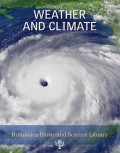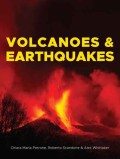
Mammals
Mammals (from Latin mamma, 'breast') are a group of vertebrate animals constituting the class Mammalia (/məˈmeɪliə/), and characterized by the presence of mammary glands which in females produc…
- Edisi
- -
- ISBN/ISSN
- 978-1-61535-466-5
- Deskripsi Fisik
- 28x22cm;102hlm
- Judul Seri
- -
- No. Panggil
- 599 MIC m

Evolution and Genetics
Human evolutionary genetics studies how one human genome differs from another human genome, the evolutionary past that gave rise to the human genome, and its current effects. Differences between ge…
- Edisi
- -
- ISBN/ISSN
- 978-1-61535-472-6
- Deskripsi Fisik
- 28x22cm;102hlm
- Judul Seri
- -
- No. Panggil
- 576 MIC e

Ecology
Ecology is the study of organisms and how they interact with the environment around them. An ecologist studies the relationship between living things and their habitats. In order to learn about the…
- Edisi
- -
- ISBN/ISSN
- 978-1-61535-473-3
- Deskripsi Fisik
- 28x22cm;102hlm
- Judul Seri
- -
- No. Panggil
- 577 MIC e

Reptiles and Dinosaurs
Updated for 2013, Reptiles and Dinosaurs, is one book in the Britannica Illustrated Science Library Series that covers today's most popular science topics, from digital TV to microchips to touchscr…
- Edisi
- -
- ISBN/ISSN
- 978-1-61535-464-1
- Deskripsi Fisik
- 27x22cm;101hlm
- Judul Seri
- -
- No. Panggil
- 567.9 MIC r

Human Body II
Humans are, of course, animals—more particularly, members of the order Primates in the subphylum Vertebrata of the phylum Chordata. Like all chordates, the human animal has a bilaterally symmetri…
- Edisi
- -
- ISBN/ISSN
- 978-1-61535-470-2
- Deskripsi Fisik
- 28x22cm;102hlm
- Judul Seri
- -
- No. Panggil
- 571 MIC h. 01

Weather and Climate
There is often confusion between weather and climate. Weather is the condition of the atmosphere at a particular place over a short period of time. For example, on a particular day in Trinidad, the…
- Edisi
- -
- ISBN/ISSN
- 978-1-61535-460-3
- Deskripsi Fisik
- 28x22cm;102hlm
- Judul Seri
- -
- No. Panggil
- 551.48 MIC w

Volcanoes and Earthquakes
An earthquake (also known as a quake, tremor or temblor) is the shaking of the surface of the Earth resulting from a sudden release of energy in the Earth's lithosphere that creates seismic waves. …
- Edisi
- -
- ISBN/ISSN
- 978-1-61535-459-7
- Deskripsi Fisik
- 28x22cm;100hlm
- Judul Seri
- -
- No. Panggil
- 551 MIC v

Plants, Algae, and Fungi
Aquatic Plants hese plants are especially adapted for living in ponds, streams, lakes, and rivers—places where other land plants cannot grow. Although aquatic plants belong to many different fami…
- Edisi
- -
- ISBN/ISSN
- 978-1-61535-464-0
- Deskripsi Fisik
- 28x22cm;102hlm
- Judul Seri
- -
- No. Panggil
- 571.2 MIC p




 Computer science, information & general works
Computer science, information & general works
 Philosophy & psychology
Philosophy & psychology
 Religion
Religion
 Social sciences
Social sciences
 Language
Language
 Pure Science
Pure Science
 Applied sciences
Applied sciences
 Arts & recreation
Arts & recreation
 Literature
Literature
 History & geography
History & geography